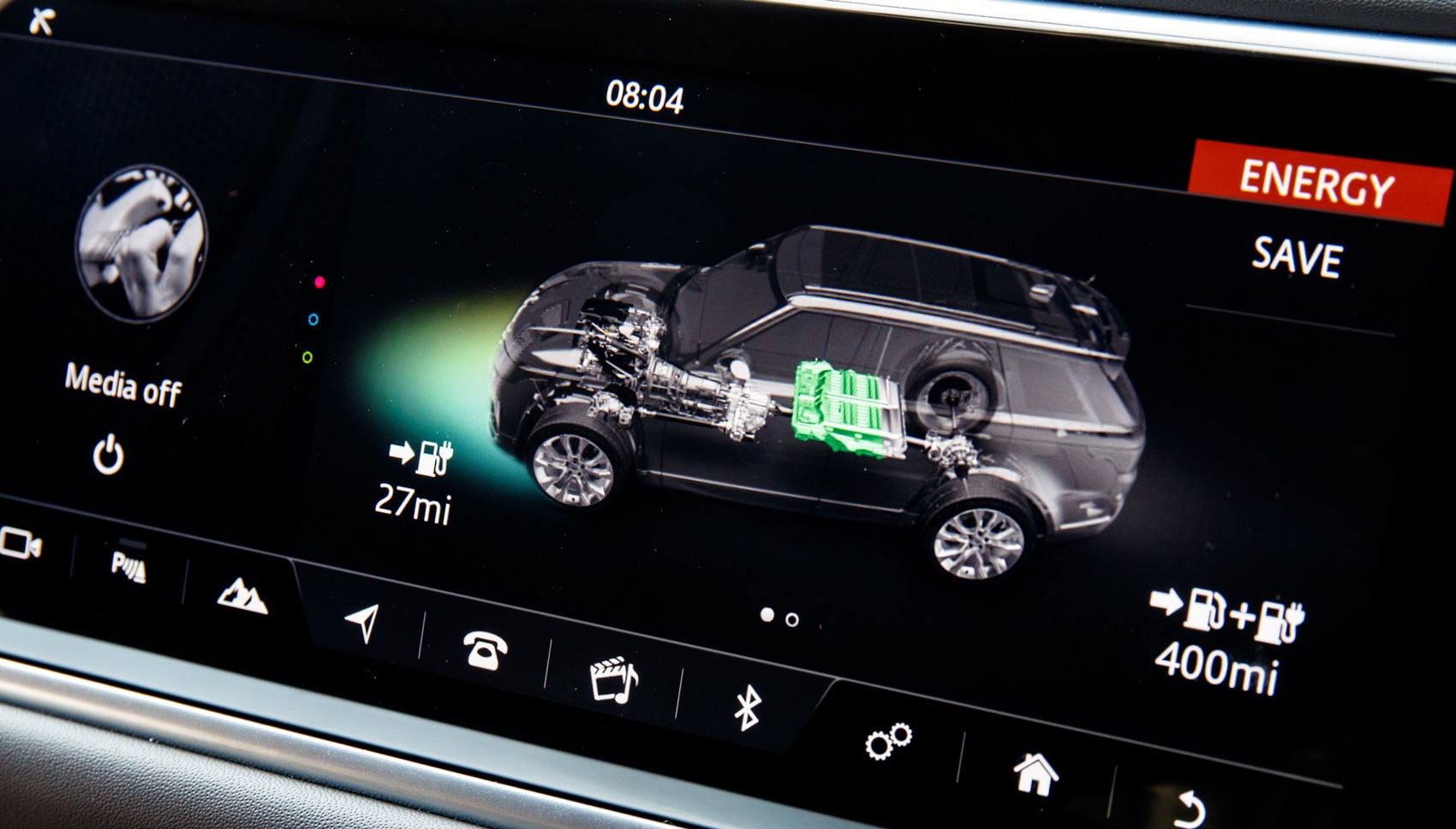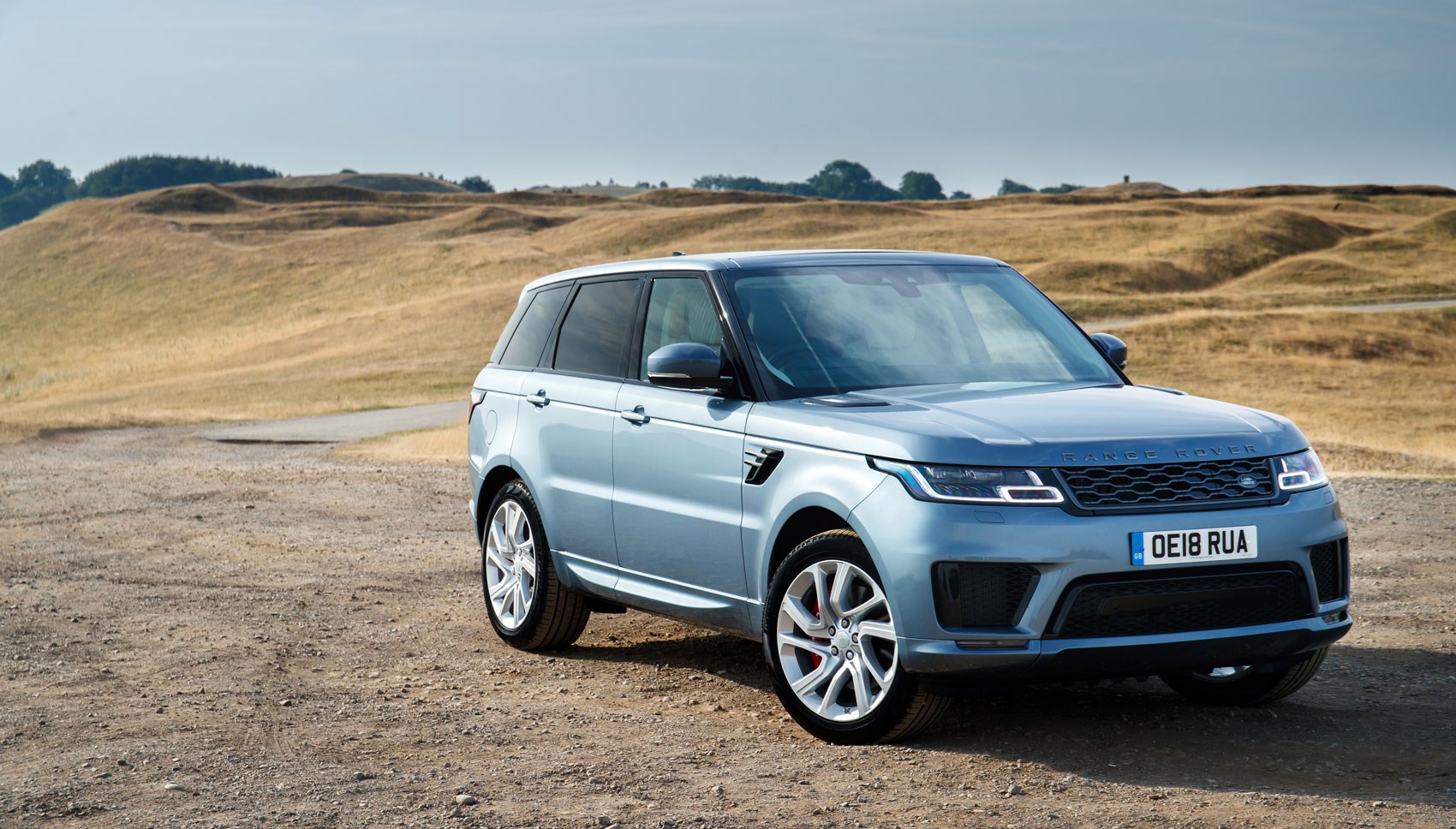► First drive of RR Sport PHEV
► P400e uses 4cyl and e-motor
► UK prices from £72,185
The call of the electrified powertrain within Land Rover has been answered by both the Range Rover Sport and its bigger brother, the Range Rover.
Land Rover first announced a P400e plug-in Range Rover Sport back in October 2017, but it went on sale first in China. But by the time it has been available for general sale at the end of March 2018 in Europe and the cars have been built, Land Rover has confirmed that there’s a 2019 update on the way already.
Confusing, we know, but Land Rover told us that some of the 2018 model year cars are already in dealer stock and the update between 2018 and 2019 is more about small refinements than a genuine mid-life facelift, so our test of the MY2018 PHEV here still counts.
So, what makes up the Range Rover Sport hybrid system?
There’s 398bhp in total from both the 2.0-litre four-cylinder turbo petrol and an 85kW electric motor, making it the most powerful Range Rover Sport this side of the supercharged petrol V8s. Torque is rated at 478lb ft combined, and the 6.3sec 0-62mph launch sprint makes it quicker on paper than the SDV8 version. It’s no slouch.
Land Rover claims up to 31 miles of EV-only range, but the system by default will act like a parallel hybrid where the petrol engine and electric motor constantly work together – much like a Toyota Prius or Hyundai Ioniq Hybrid.

There’s also an EV button on the centre console that’s designed to force the car to use the battery pack and electric motor as much as possible and really dulls out the throttle. What felt a little odd during our initial test drive was how the Sport still ended up using the petrol engine with the mode engaged, with around 75% charge in the battery pack. It may take a lighter foot than my own to operate properly.
Inside, other than the EV button, the Sport P400e’s instrument dials have been tweaked to better represent the hybrid powertrain. So, the regular rev counter is replaced by an energy meter that displays when the car is using regenerative braking when coasting or braking and ‘Eco’ and ‘Power’ areas for when accelerating.

The ‘My EV’ menu within the infotainment system has a slick energy monitor graphic and not only tells you how much electric range you have left, but also the combined range of the car on the fly. It allows you to quickly activate the battery-save function for if you plan on driving some EV-only miles later in your journey.
How fast is it?
The Range Rover Sport hybrid feels pretty potent – it’s definitely towards the quicker end of the Range Rover Sport scale. When you hoof it, there’s a little delay from the eight-speed auto but the combustion engine and electric motor quickly get their act together to make up for it, with a mostly seamless power delivery curve up the rev range.
The four-pot has much more of a bassy growl to it under hard acceleration compared with the strained whine experienced driving the 287bhp Si4 engine in the Evoque and Land Rover Discovery Sport. The whole powertrain seems to make a little more sense than in the full-size Range Rover.
And what’s the Range Rover Sport PHEV’s handling like?
It may have Sport in the name and be built almost entirely from aluminium but the RRS is still a large SUV. It’s not exactly ungainly but the Sport will happily lean around fast sweepers.

Ride comfort isn’t too lumpy, even in dynamic mode, with most ruts on our heinously lumpen surfaces being softened as they make their way to the seat of your pants. Like the SVR we’ve also tested, the steering rack feels a little rubbery but is designed for relaxed inputs.
The handling difference is inconsequential between the PHEV and the SDV8, as the plug-in is only around 30kg heavier. Which is an impressively modest weight penalty for going hybrid, we reckon.
Verdict
In the grand scheme of things, the plug-in Range Rover Sport makes as much sense as any of its rivals; the electrified powertrain feels better matched here than it does in the maximum Range Rover. It’s punchy, quiet and still very luxurious, and may be desirable in its own right for being another SUV with a conscience.
Check out our Land Rover reviews
